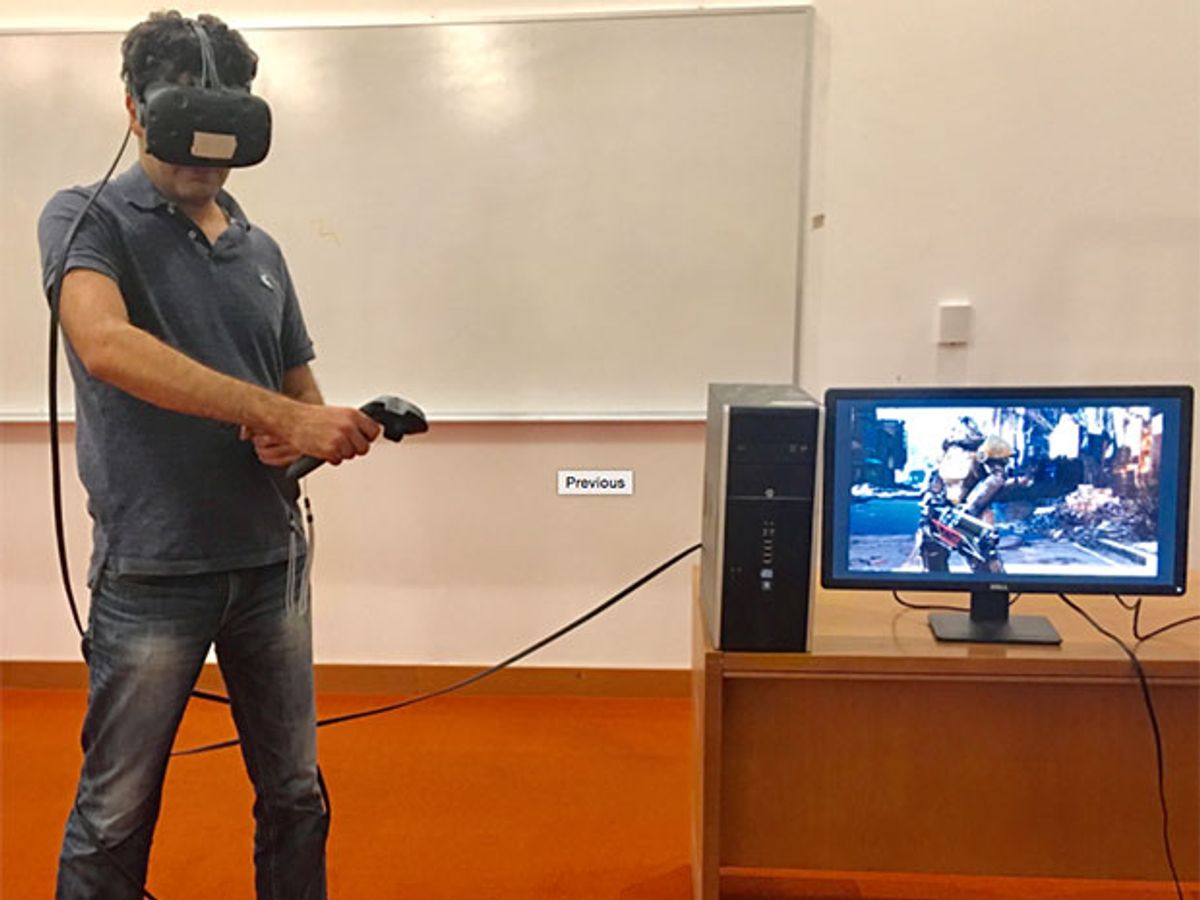One of the most critical components of a convincingly immersive virtual reality experience is the connection between the headset and the computer. Streaming high-resolution multiview video in real time demands a connection that can reliably handle sustained data rates of more than 6 gigabits per second, and as the resolution and frame rate of VR increases, bandwidth requirements are going to increase as well.
Speeds exceeding 6 Gb/s are easily achievable with a hard-wired connection, which explains why almost all VR systems have a big fat cable tethering the headset to a computer. This isn't an issue for stationary VR, but there are more and more options being introduced that make moving around (at least a little bit) an integral part of VR’s immersive experience. So, being chained to your PC is annoying at best and completely illusion-breaking at worst.
MIT has been working on a way to cut the cord, which sounds like the obvious solution. Current Wi-Fi standards can't handle the amount of bandwidth that VR needs, so MIT researchers have gone another route. They’ve created a system based on millimeter-wave signals (also the foundation of 5G), and directional phased-array "mirrors" that can bounce signals around a room in order to sidestep the line-of-sight issues common to millimeter-wave communications.
While wireless devices using the existing 802.11ad 60-gigahertz standard (WiGig) are capable of delivering the data throughput that VR demands, WiGig communications fall victim to the same issue that all millimeter-wave systems have: They require a clear line of sight between transmitter and receiver. Furthermore, the transmitting and receiving antennas tend to be highly directional. For many applications, this isn't a big deal, because you can tolerate transient bandwidth degradation. But VR isn't the least bit forgiving, and users who move their heads or hands will likely cause significant disruptions.
One way to tackle this problem is by placing a whole bunch of antennas in such a way that you're confident at least one of them will always have a clear line of sight. But that's complicated and expensive; because all of those antennas have to talk to the computer, you'll be running cables to all of them.
MIT's has solved that conundrum with something it calls MoVR. Each MoVR unit consists of two credit-card-size, highly directional antennas—one for receiving and one for transmitting. The antennas use phased arrays in order to focus signals into narrow beams that can be electronically steered at a submicrosecond timescales. However, the antennas themselves are "dumb," in that they're not intended as primary data transmitters. Instead, they act as mirrors, receiving millimeter-wave signals from an antenna attached to the computer and then reflecting that signal to the receiver on the VR headset. This way, if you turn your head such that your headset no longer has a line of sight to your computer, your computer can bounce a signal off of MoVR instead.
Of course, MoVR is more than just a simple reflector; it actively tracks both the millimeter-wave transmitting antenna on the computer as well as the receiving antenna on the headset. It can do this to within 2 degrees, which is highly precise considering the phased array's 10-degree beam width. MoVR includes an amplifier to keep the reflected signal nice and strong. And even though the wireless signal is taking an extra bounce, all of the components of the MoVR system work much faster than the 10-millisecond refresh rate of the VR display, so there's no additional latency.
MIT has done some preliminary testing of MoVR, and the results are promising. In both line-of-sight and indirect communication scenarios, it did not degrade the performance of a wireless HTC Vive VR headset in a room with standard furniture. The end goal is to shrink the MoVR hardware down to something about the size of a smartphone. Sticking a couple of them on your walls would allow you to create an environment where multiple users can play a VR game wirelessly at the same time.
Evan Ackerman is a senior editor at IEEE Spectrum. Since 2007, he has written over 6,000 articles on robotics and technology. He has a degree in Martian geology and is excellent at playing bagpipes.

 Photo:
Photo: 

